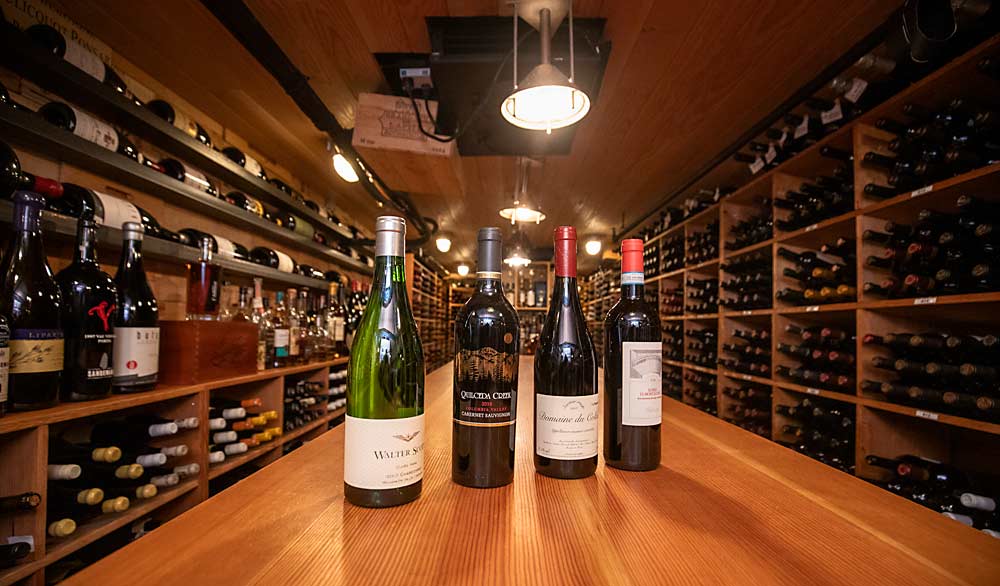
The state of the Washington wine grape industry is full of challenges, as it has been for the past year or more, according to a panel of industry experts who spoke at WineVit, the annual industry meeting organized by the Washington Winegrowers Association.
But within the broad picture of plateaued consumption, increased competition, pandemic market disruption and oversupply, lies nuance and uncertainty, along with a few hopeful signs.
Drinkers are trading up for higher-priced wines and buying more off site. Certain varieties have seen phenomenal growth while others have dropped. And restaurants are starting to re-enter the wine game as coronavirus-related restrictions relax across the nation.
Those were just a few nuggets from the State of the Industry presentation that kicked off WineVit, held virtually and stretched over three weeks in March.
The industry faces a menagerie of opportunity and struggle.
“I think we collectively have some work to do,” Danny Brager, a beverage industry consultant based in Mission Viejo, California, said at the conference — namely: marketing to younger and multicultural drinkers swayed by hard seltzers, ready-to-drink spirits and flavored malt beverages.
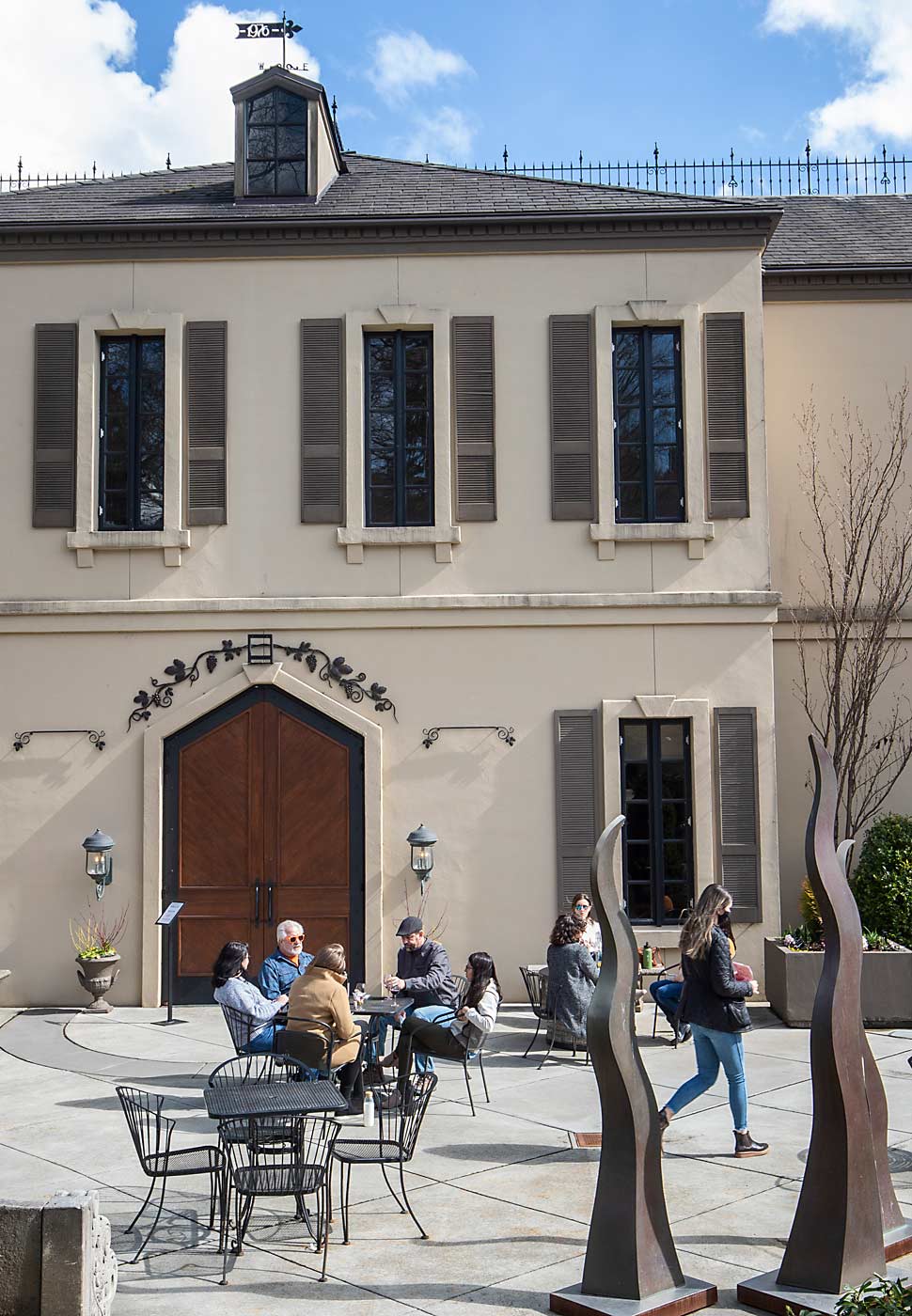
Some good news
Restaurants are coming back into operation, and that means premium wines, a Washington forte, are becoming available again in the place where they command the most premium price.
“We see the light at the end of the tunnel,” Nelson Daquip, wine and spirits director for Canlis, a Michelin three-star waterfront restaurant in Seattle, said in an interview with Good Fruit Grower.
Known for its wine collection, the restaurant has always considered itself a long-term cellar, banking many of its high-end wines to age four or five years before selling. When the pandemic hit, the ownership — with heavy hearts — sold off some of its “library” with take-out dinners for cash flow to keep paying staff, Daquip said. To get creative, he and his staff offered guests sommelier consults by phone.
Today, they are rebuilding the collection, skewing more toward current vintage, Daquip said “as opposed to the library wines,” as the restaurant works its way back to normal.
“We’re going to be more intentional about the wines we’re starting to bring in,” he said.
During the pandemic, customers in the Northwest supported their favorite restaurants with take-out orders of food but not as much for wine, said Lane Hoss, vice president of operations for high-end chain Anthony’s Restaurants, also speaking with Good Fruit Grower. Those restaurants in turn didn’t order any more from wineries.
That started to change in March.
“We will see more restaurants replenishing wine cellars,” she said. “We’ve already started doing that.”
Consumers often learn about new wines in restaurants, said Anthony Anton, CEO and president of the Washington Hospitality Association, which represents the state’s lodging and restaurant industry. “It’s the tasting room for all of Washington’s great wines,” he said in an interview with Good Fruit Grower.
During the pandemic, Washington regulators loosened some liquor restrictions to allow more restaurants to sell unopened bottles of wine with take-out meals. That helped restaurants and wineries, Anton said. In late March, a bill that would make those changes permanent passed both chambers of the state Legislature and was headed to the governor’s desk.
Restaurants have noticed pent-up demand for dining out and expect it to continue into the spring tourism season, but some consumers may remain accustomed to bringing meals home. The restaurant and wine industries may need to adjust to the new normal, but Anton considers that an opportunity.
For Ste. Michelle Wine Estates, the state’s largest wine company, wine volume from in-store sales went up about 5 percent from 2019 to 2020, chief winemaker Juan Muñoz-Oca said at WineVit. That was good, but it did not make up for the 10 percent drop in restaurant sales. Ste. Michelle, which accounts for well over half of the state’s volume, sells a larger share of its wine to restaurants than the national average.
Online wine shopping, which shot up during the pandemic, likely will remain a customer habit even after the coronavirus cloud finally lifts, Muñoz-Oca said.
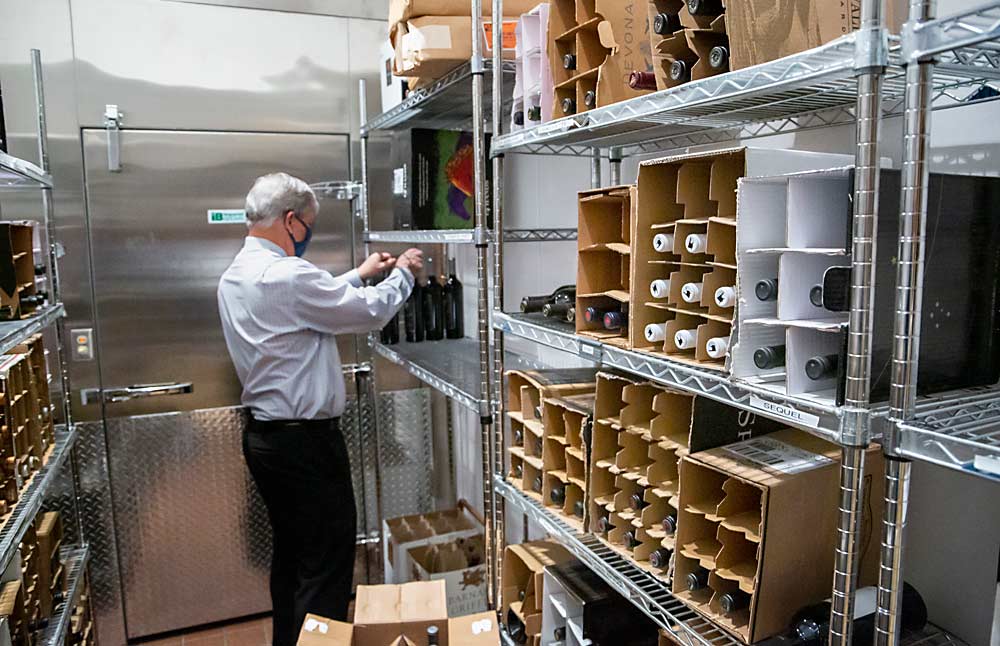
Supply and demand
Meanwhile, the entire U.S. wine industry still has an oversupply, but it is gradually sliding into balance, experts said.
In Washington, an October freeze in 2019 and smoky skies in 2020 cut wine grape production to 178,500 tons in 2020, according to the Washington State Wine Commission, an 11 percent drop from 2019.
But some tough decisions were still in order. In 2020, Ste. Michelle took $292 million worth of backed-up inventory off of the market and set aside $100 million over a five-year span to honor contracts the company won’t completely fill, according to the company’s 2020 financial reports. Meanwhile, California growers have pulled about 15,000 acres over the past year, about half of the 30,000 acres that some industry leaders have called for.
Still, Washington has enough acreage now to produce an estimated 250,000 tons of wine grapes, but only demand for roughly 220,000 tons, according to Chris Bitter, owner of Vintage Economics. To close that gap, Washington would have to sell about 2 million more cases per year in a market with stagnated demand.
“They’re going to have to take those estimated 2 million cases from someone else (imported wine or other states’ wine),” Bitter said at WineVit.
Bitter’s statistics, derived from shipments reported to the state Liquor and Cannabis Board, show Washington wine shipments dropping in nearly every category and declining overall by almost 1 million cases between 2019 and 2020. The drop hit wineries of all sizes but disproportionately affected those in the Walla Walla area and other destination areas outside of Puget Sound.
Again, the news wasn’t all bad. About 40 percent of wineries actually increased the volume of their shipments in 2020 through curbside pickups, online sales and old-fashioned telemarketing. Club members remained especially loyal in some places, Bitter said. Precept Wines, Washington’s second-largest producer, boosted case shipments by 12 percent, while dozens of boutique wineries gained 25 percent or more.
And on another hopeful note, wine consumers reached for more expensive wines during the pandemic. Wines priced between $20 and $25 saw an 18 percent increase in shipments between 2019 and 2020, dwarfing all other price categories. The market share of those wines was low, and it doesn’t make up for the loss of customers dropping more than $100 per bottle in a fancy restaurant, but it shows a promising trend, said Muñoz-Oca at WineVit.
“It’s not a lot of volume, but it is interesting to see how people are moving into higher categories, which is exactly what we need in Washington,” he said. •
—by Ross Courtney

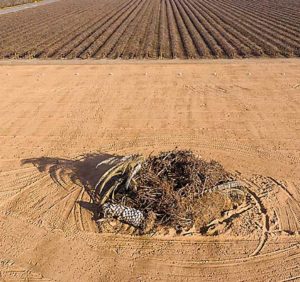
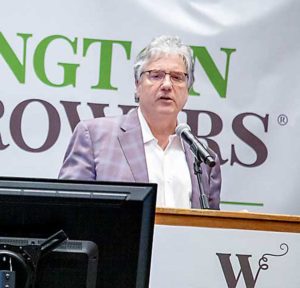





Leave A Comment